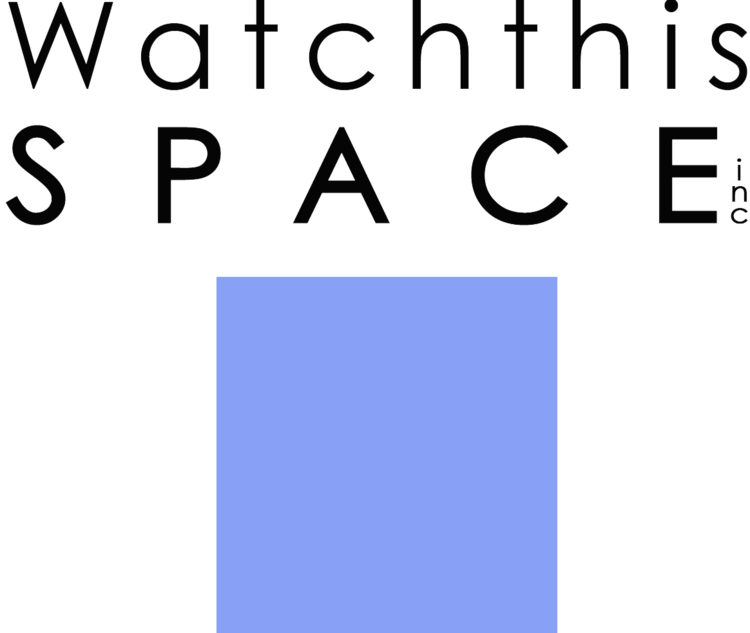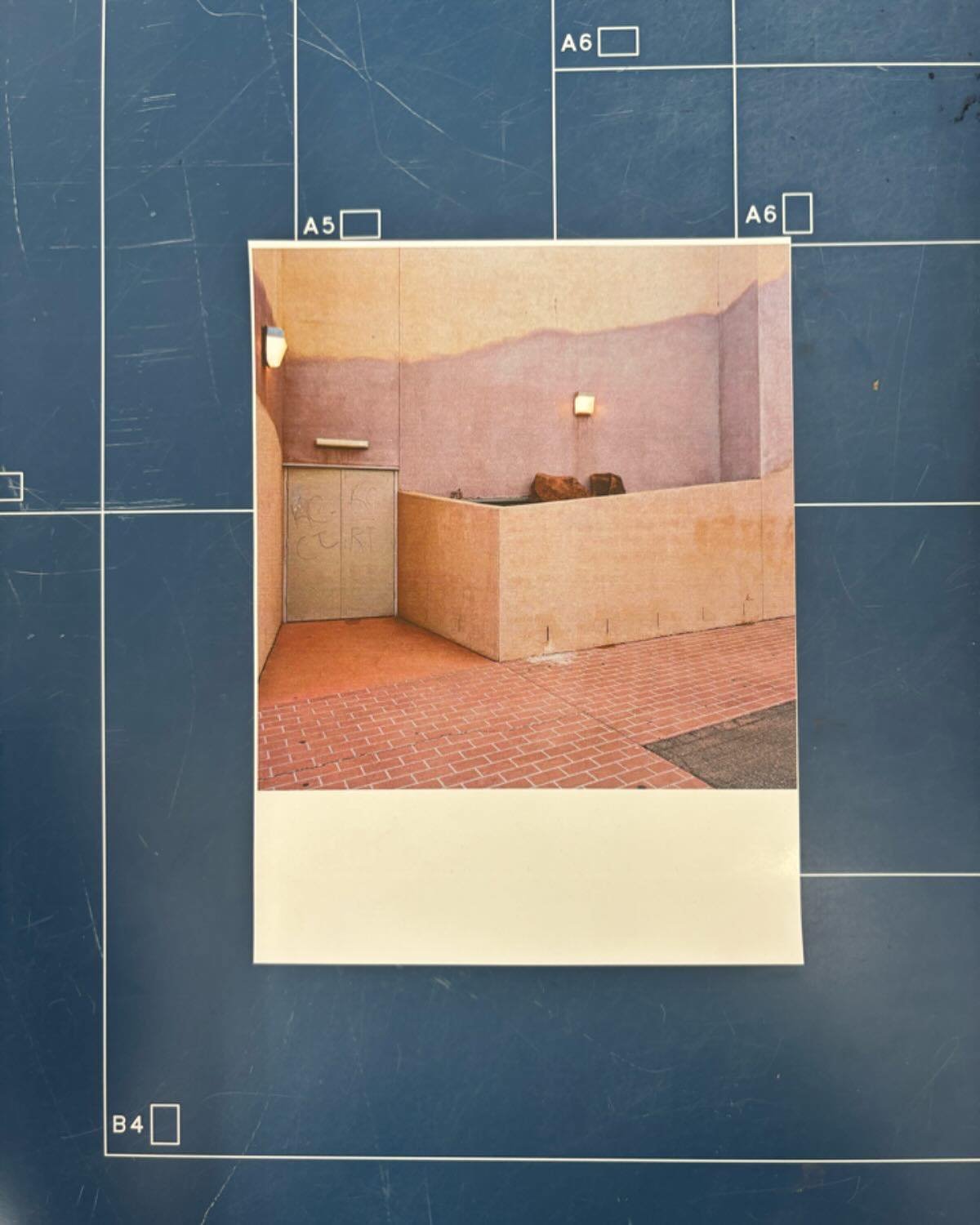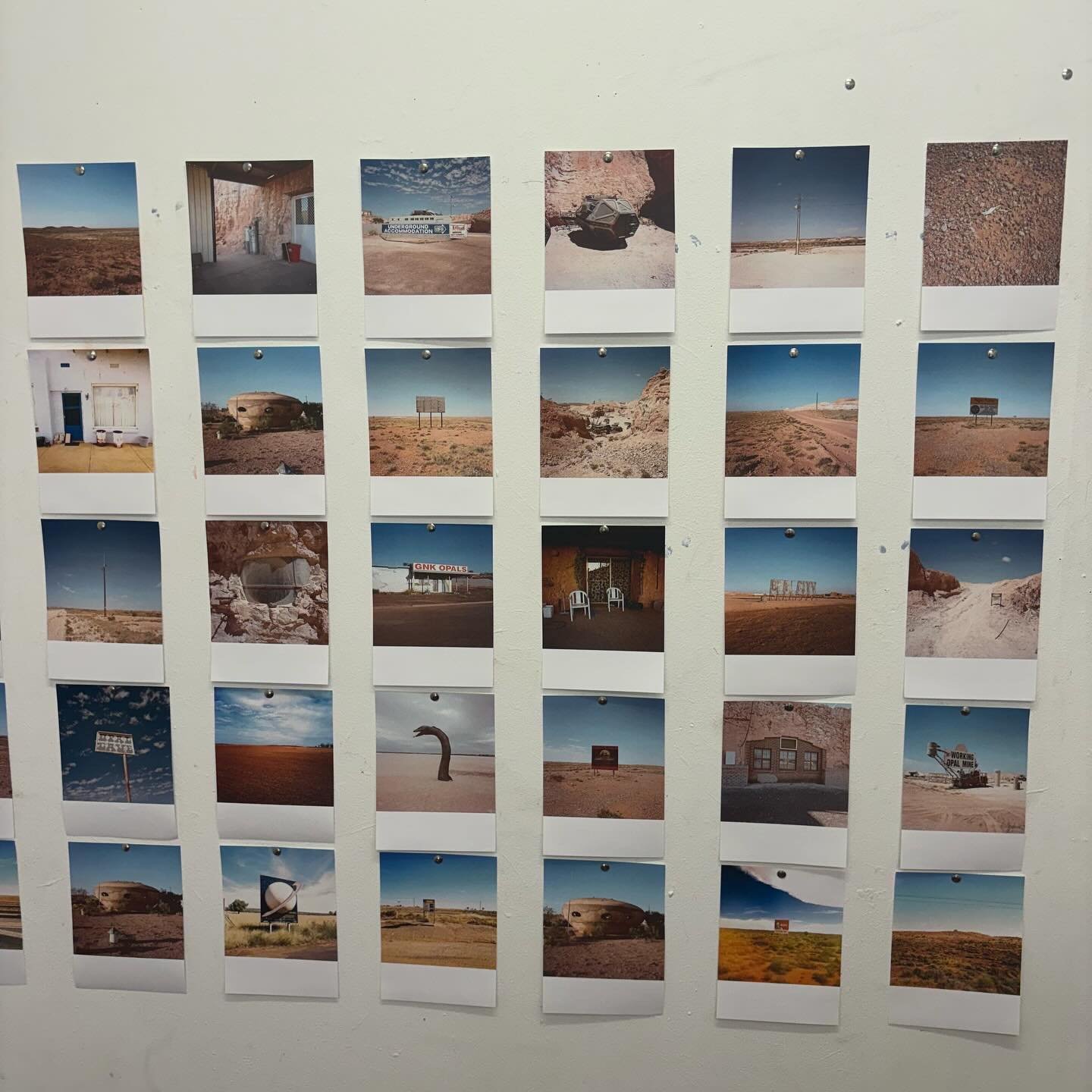My residency began after a long drive with my partner (whom I subjected to constant roadside stops for photographs from Broken Hill (Wilyakali country) to Kaurna land and a two-day dream-like stop-off in Umoona, Coober Pedy. I arrived at Mpartwe at night, leaving me with a sense of disorientation and exhaustion.
Waking up the next morning covered in red dust, I attempted to brush off the undealt with anxiety that seemed to follow me into the desert and drove to the gallery. I pulled out a chair and sat down to confront my existing project, an archive of sound, print works, and photographs I intended to collate into a zine for the Watch This Space zine fair. This was, however, blatantly interrupted by the rain, which started and did not stop for several days, bringing with it the flooding of the Todd River. I spent this time walking up and down the Todd contemplating sayings I had heard around the flood, “If you’ve seen the Todd flow three times, you’re a local” or “Anyone who sees the Todd River flow three times falls in love with the Alice.” Reflecting on the contradictions and false romanticisms these proverbs held, I managed to engage in a sense of motivation just as the rivers dried and the sun returned.
I had spent the past six months before my residency calling pay phones across the country but mainly in remote areas, including Mparntwe and some roadhouses along the Tanami. I considered these recordings experiments using the phonebooths as a field recorder or mapping device. During my residency, I began making Xerox prints, transcribing the conversations onto old pieces of a5 paper I had brought. After listening to people’s interpretations of the prints in my studio, I realized the conversations as poetry—a collaboration between myself and those who pick up the phone through happenstance.
Wanting to explore a connection between poetry and landscape, I took found images collected of arial photographs from around the NT, SA, and WA to begin systematically altering the prints onto the same a5 paper. This was a simple process of photocopying the same image over and over again until it fell away to just the ink dots and lines. My aim was to take these print works and somehow incorporate them into one zine with my photographs of landscapes I had taken on the road with my 6x6 film camera.
In the process of my studio work I also started making new photographs around town which have the potential to become a separate body of work as a soft response to the curfew, exploring how simple rights most take for granted can forcibly and violently be taken away and others may continue to enjoy these spaces with little thought. I approached this as a daily practice or routine going out every day from 6pm exploring the town meditatively as though I was listening to it. Photographing things such as buildings, rocks, trees, the river and how these landscapes converge and relate.
The outcome of my residency was mostly a great sense of appreciation for the learning that time spent on Arrernte land at WTS had given me. A highlight for me would no doubt be brining my zine together just in time for the zine fair and sharing a table with all the other amazing artist while still folding my zines because I always leave things to the last minute.


